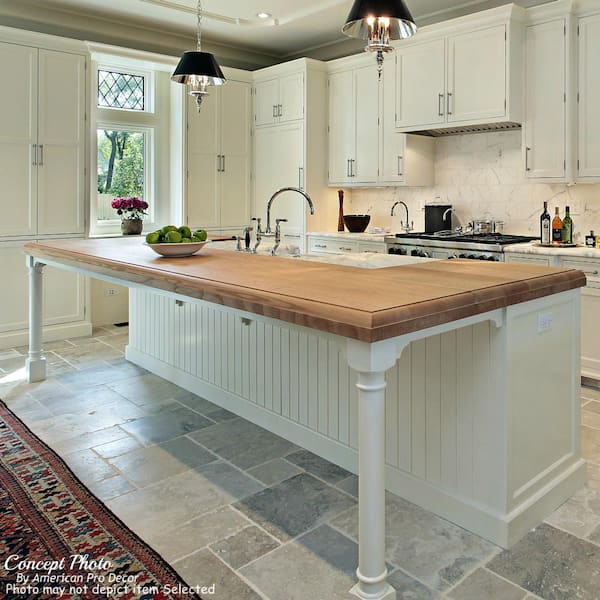Stylish Kitchen Island Leg Ideas to Elevate Your Kitchen Decor
Stylish Kitchen Island Leg Ideas to Elevate Your Kitchen Decor
Blog Article
The Significance of a Sturdy Kitchen Island Leg in Developing a Useful Cooking Area
A strong kitchen area island leg serves as a fundamental component in developing a useful cooking atmosphere, offering essential assistance for both the kitchen counter and numerous kitchen area activities. As kitchens advance right into multifunctional locations for cooking, dining, and interacting socially, the option of materials and layout considerations for island legs becomes significantly essential.
Benefits of Sturdy Island Legs
Providing essential assistance, durable kitchen island legs play a crucial function in enhancing the capability and longevity of cooking area islands - kitchen island leg. These legs not only birth the weight of the counter top and any added products positioned on the island, yet likewise add to the total stability of the framework. A well-supported kitchen area island ensures that it continues to be useful and upright, also under heavy use, which is particularly important in hectic kitchen atmospheres
Moreover, durable island legs can boost the aesthetic allure of the kitchen. They supply a strong framework that can match numerous design styles, from modern-day to traditional. This convenience allows home owners to personalize their cooking area islands according to personal preference while making sure that the architectural honesty continues to be uncompromised.
In addition to their helpful function, robust kitchen island legs can also improve safety. Ultimately, investing in sturdy kitchen island legs is essential for a functional and visually pleasing cooking location.
Materials for Kitchen Island Legs
When choosing products for cooking area island legs, toughness and visual allure are vital aspects to take into consideration. The most usual products consist of wood, metal, and engineered wood, each offering unique advantages.
Hardwood, such as maple, oak, or cherry, is a traditional choice because of its stamina and ageless beauty (kitchen island leg). It can hold up against significant weight and is resistant to put on, making it excellent for high-use kitchen environments. Additionally, wood can be discolored or repainted to match various cooking area designs
Metal legs, frequently crafted from stainless-steel or functioned iron, supply a commercial and modern look. They are exceptionally solid and can support significant loads while being immune to wetness and warmth, which is advantageous in a cooking location. Steel legs can also be easily cleaned, boosting their usefulness.

Style Factors To Consider for Stability
The choice of products for cooking area island legs directly affects the layout considerations for security. When making a kitchen island, it is vital to review the weight-bearing ability of the selected products. Heavier products, such as solid timber or metal, typically supply greater security, especially under the anxiety of that site daily use.
Additionally, the leg style must integrate correct geometry to improve security. A wider base raises the support area, decreasing the risk of tottering or tipping. Consideration must also be offered to the elevation of the legs; out of proportion leg lengths can cause inequality, endangering the overall stability of the island.
In addition, the circulation of weight across the island is vital. Ensuring that the leg placement lines up with the heaviest parts, such as countertops and home appliances, will additionally boost stability.
Maintenance Tips for Long Life

Depending on the product of the legs-- whether timber, steel, or composite-- suitable cleaning techniques must be used. Steel legs might call for a light gloss to protect against corrosion and maintain their luster.
Additionally, tightening screws and helpful hints bolts routinely can guarantee security and prevent tottering. If the kitchen island experiences heavy use, consider reinforcing the legs with additional brackets or sustains to boost durability. Last but not least, using a safety surface or sealant can protect against dampness and discolorations, lengthening the life expectancy of the legs. By adhering to these upkeep pointers, homeowners can ensure their kitchen island legs remain useful and robust for years to come.
Picking the Right Leg Design
Routine upkeep makes certain that kitchen island legs remain strong and practical, yet picking the appropriate leg design is just as vital for both aesthetic appeals and support. The option of leg style can considerably influence the overall design and harmony of your kitchen.

Capability is an additional essential aspect. For example, thicker legs or those with a durable base can sustain much heavier kitchen counters and tools, boosting the island's energy. On the other hand, slender legs may produce a ventilated appearance, appropriate for lighter styles yet possibly much less encouraging.
Verdict
In recap, the significance of durable cooking area island legs can not be overemphasized in the production of a functional food preparation location. These legs give crucial support, improve stability, and add to the general visual of the cooking area. By carefully selecting proper products and designs, in addition to applying proper maintenance methods, the longevity and efficiency of cooking area islands can be ensured. Ultimately, spending in durable island legs is basic to achieving a risk-free and effective cooking environment.
A tough cooking area island leg serves as a basic part in establishing a useful cooking setting, offering necessary assistance for both the countertop and numerous kitchen tasks.Providing essential support, tough kitchen area island legs play a pivotal function in boosting the functionality and durability of kitchen area islands. Ultimately, investing in tough go to these guys kitchen island legs is necessary for a functional and aesthetically pleasing cooking location.
Consideration needs to also be provided to the elevation of the legs; disproportionate leg sizes can lead to inequality, jeopardizing the total security of the island.
Wooden legs give warmth and a traditional appearance, while steel legs offer a industrial and modern-day feeling.
Report this page